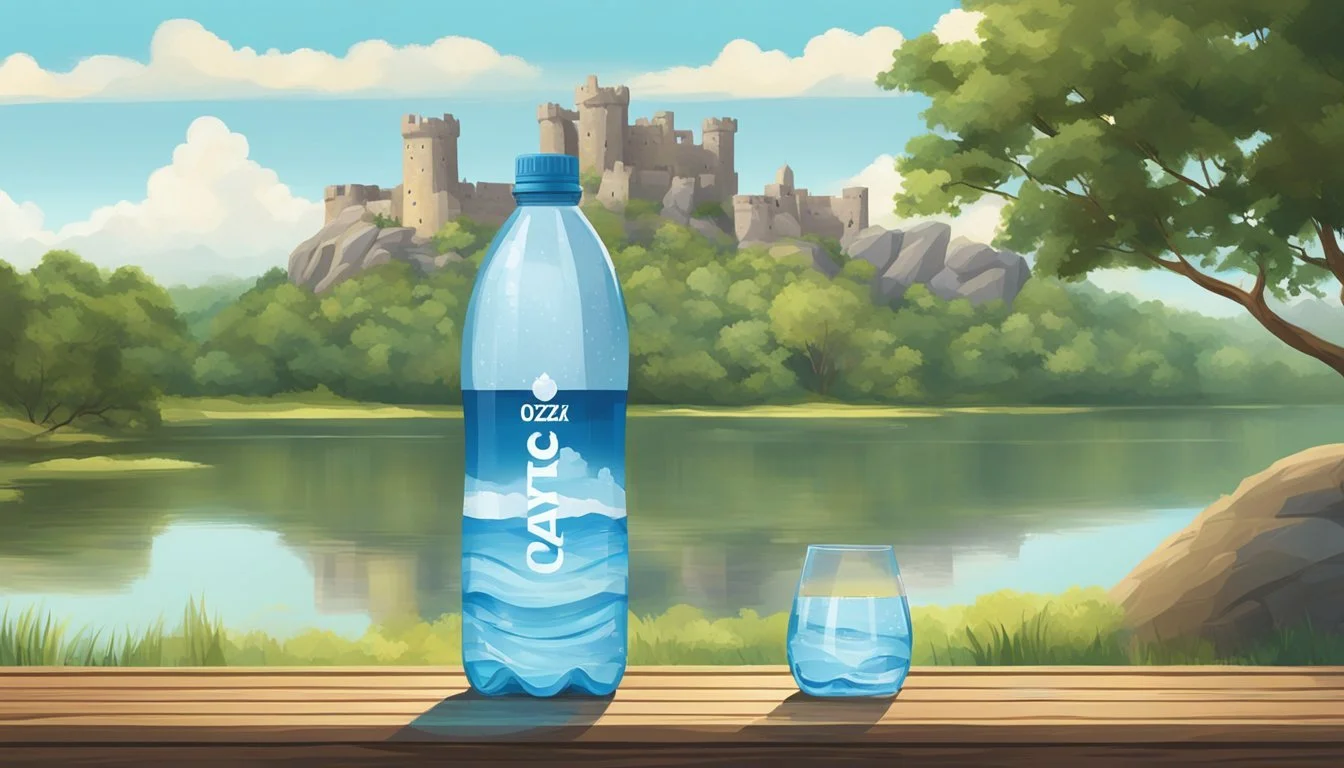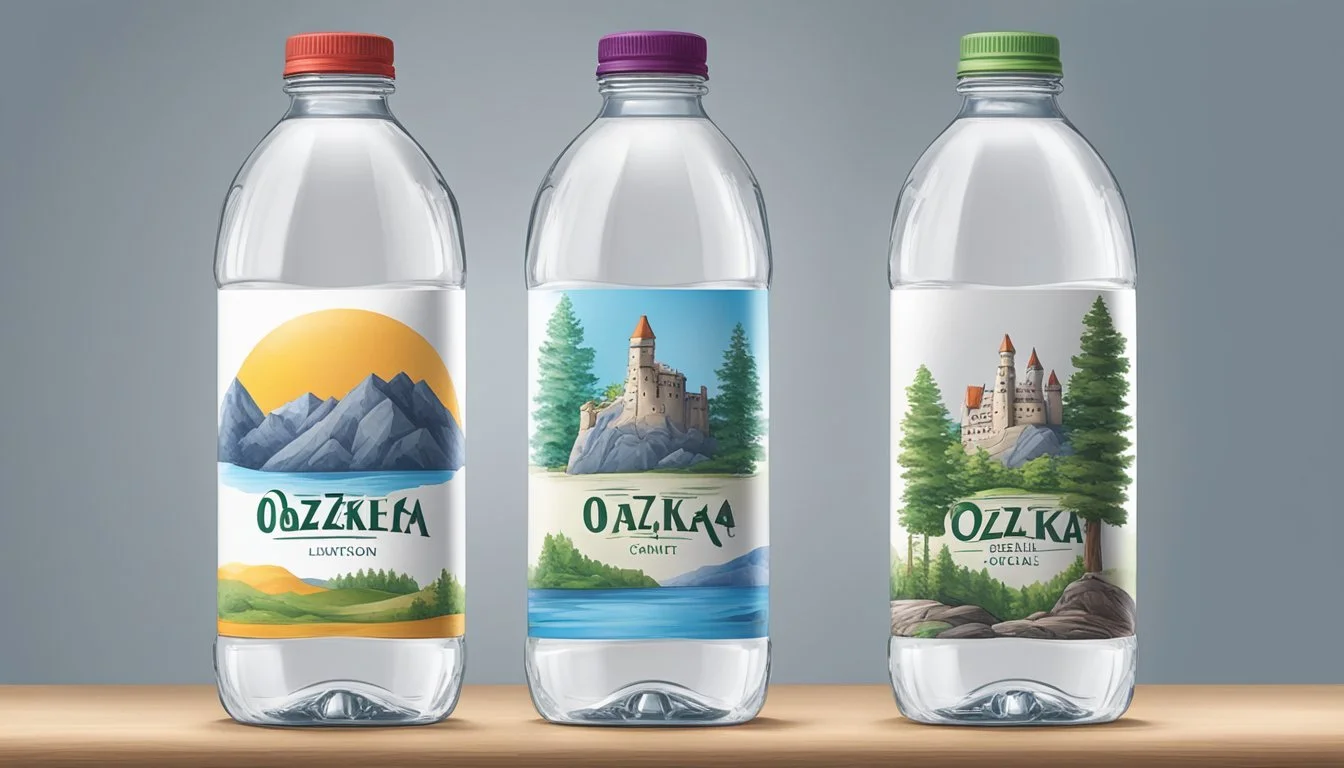Ozarka vs. Castle Rock
Comprehensive Comparison of Bottled Water Brands
When it comes to choosing the best bottled water, the debate between Ozarka and Castle Rock often arises. Ozarka, known for sourcing its water locally from Texas, offers hydration with a taste that many find refreshing and satisfying. Castle Rock, on the other hand, stands out for its pristine water sourced from a natural spring in the Pacific Northwest.
Castle Rock's natural spring origin gives it a superior taste and purity that many find unmatched. This difference in sourcing is a key factor that sets these two brands apart. Consumers often rave about Castle Rock's clean and crisp flavor, which lacks any of the aftertastes sometimes noted in other bottled waters.
While Ozarka’s regional sourcing contributes to its popularity and availability, Castle Rock's commitment to pure, natural spring water makes it a premium choice for those seeking the best hydration experience. Each brand has its strengths, appealing to different preferences and needs.
Understanding Bottled Water
Bottled water comes in various forms and is subject to specific quality standards and regulations. The environmental impacts of bottling practices are significant considerations when choosing between brands.
Types of Bottled Water
Bottled water generally falls into several categories: spring water, purified water, mineral water, and artesian water. Spring water is derived from underground formations and flows naturally to the surface. Purified water undergoes additional processes like distillation, deionization, or reverse osmosis to remove impurities.
Mineral water contains specific minerals present at consistent levels when bottled. Artesian water comes from a confined aquifer where the water level stands above the top of the aquifer.
Assessing Water Quality
Quality assessment of bottled water involves evaluating factors like pH levels, mineral content, and contaminants. pH levels determine the acidity or alkalinity of the water, affecting its taste and suitability for consumption.
High-quality bottled water should have balanced mineral content, providing essential electrolytes like calcium, magnesium, and potassium. Contaminant levels, regulated by entities like the FDA, must be within safe limits to ensure no harmful substances are present in the water.
Bottled Water Regulations
The FDA sets regulations for bottled water safety, ensuring compliance with stringent standards. These regulations mirror those of the EPA for tap water but have additional requirements for bottling and labeling.
Labeling requirements must accurately reflect the type of water and source. Bottling facilities are regularly inspected to ensure hygienic practices and proper handling. Compliance with these regulations helps maintain consumer trust and safety.
Environmental Impact of Bottling
The environmental impact of bottled water is a growing concern. Plastic waste from bottles contributes significantly to pollution. Efforts to reduce the impact include using recycled plastic and developing biodegradable materials.
Furthermore, the extraction of water can deplete natural resources, affecting ecosystems. Companies are encouraged to adopt sustainable practices, such as responsible sourcing and reducing carbon footprints during production and transportation.
Promoting the use of reusable bottles and improving recycling programs can mitigate some negative impacts.
History and Source Analysis
Ozarka and Castle Rock are distinct bottled water brands with unique origins and sources that impact their characteristics. Understanding the history and water sources of these brands helps consumers make informed decisions about which product to choose based on their specific preferences and needs.
Ozarka Origin and Source
Ozarka Natural Spring Water originated in Eureka Springs, Arkansas, in the late 19th century. In 1905, the company began bottling water from the natural springs in the Ozark Mountains. This region is known for its pure, mineral-rich water.
Today, Ozarka sources its water primarily from natural springs in Texas. The brand maintains a focus on ensuring the quality and purity of its water through rigorous testing and quality control processes. Ozarka water is known for its balanced pH level, typically close to 7.0, making it ideal for regular consumption.
Castle Rock Origin and Source
Castle Rock Water is sourced from natural springs in the Shasta Trinity National Forest in Northern California. The company was founded with a commitment to sustainability and environmental stewardship.
Castle Rock's water comes from a pristine, underground aquifer, which naturally filters the water, resulting in a clean and refreshing taste. The company emphasizes minimal processing to maintain the natural minerals and purity of the water. Their sustainable practices include using eco-friendly packaging and supporting reforestation projects, making them a preferred choice for environmentally conscious consumers.
Water Quality and Composition
Water quality and composition play a crucial role in determining the best bottled water. Factors such as mineral content, filtration methods, and Total Dissolved Solids (TDS) provide a comprehensive view of what each brand offers.
Mineral Content and pH Levels
Mineral content and pH levels are essential for understanding the health benefits and taste profile of bottled water.
Calcium: Contains approximately 2-5 mg/L.
Magnesium: Ranges between 1-3 mg/L.
Potassium: Lesser amounts, usually under 1 mg/L.
pH Level: Slightly acidic, often between 5.6 to 7.0.
Castle Rock:
Calcium: Higher content at around 7-15 mg/L.
Magnesium: 4-7 mg/L.
Potassium: Typically found around 1-2 mg/L.
pH Level: More alkaline, generally ranging from 7.2 to 8.0.
Filtration and Purification Processes
Effective filtration and purification processes ensure the removal of contaminants, making the water safe to drink.
Ozarka:
Filtration: Utilizes carbon filtration and microfiltration techniques.
Purification: Employs ozone treatment, which helps in eliminating bacteria and viruses.
Reverse Osmosis: No reverse osmosis, preserving natural minerals.
Castle Rock:
Filtration: Incorporates multiple stages including carbon and sediment filtration.
Purification: Uses reverse osmosis, effectively removing contaminants including PFAS chemicals and heavy metals.
Quality Control: Water is monitored for arsenic and other harmful substances.
TDS and Alkalinity
TDS and alkalinity measurements indicate the concentration of dissolved substances in water, impacting taste and quality.
Ozarka:
TDS: Ranges from 20 to 50 mg/L, reflecting low mineral content.
Alkalinity: Generally low, with values between 15 to 30 mg/L as CaCO₃.
Castle Rock:
TDS: Higher at about 100 to 150 mg/L, indicating richer mineral presence.
Alkalinity: Moderate levels, typically around 40 to 70 mg/L as CaCO₃.
These factors highlight the differences in water quality and composition between Ozarka and Castle Rock, helping consumers make an informed choice.
Brand Comparison
When examining Ozarka and Castle Rock, several factors are important to understand: their product range and packaging, taste and hydration experience, and market presence and reputation.
Product Range and Packaging
Ozarka offers a broad range of bottled water products. These include various sizes such as 8 oz, 16.9 oz, and 1-gallon bottles, catering to different consumer needs. The brand focuses on practical packaging that is durable and easy to carry.
Castle Rock, on the other hand, emphasizes eco-friendly packaging. They use BPA-free bottles and have an option for glass bottles. While their product range is narrower compared to Ozarka, they appeal to environmentally conscious consumers.
Taste and Hydration Experience
The taste of Ozarka is typically described as clean and fresh, sourced from springs in Texas. This provides natural minerals that some consumers appreciate. The hydration experience is consistent, making it a popular choice for daily consumption.
Castle Rock water offers a crisp and refreshing taste, drawing from mountain springs. Consumers often note its pure flavor with no aftertaste. This brand's water has a reputation for delivering an invigorating hydration experience, ideal for those seeking a premium option.
Market Presence and Reputation
Ozarka has a strong market presence, particularly in Texas and the surrounding regions. It is recognized for providing quality spring water at an affordable price. Over the years, it has built a reputation for reliability and consistency.
Castle Rock holds a niche market presence with a loyal customer base. Known for its commitment to sustainability, the brand has garnered positive feedback from eco-conscious consumers. Though less widespread than Ozarka, it is respected for its quality and environmental practices.
Health and Safety Considerations
When evaluating bottled water brands like Ozarka and Castle Rock, it is crucial to examine the potential contaminants and safety standards alongside the health benefits of mineral additives. Understanding these factors will help consumers make informed choices about their drinking water.
Evaluating Contaminants and Safety Standards
Ozarka and Castle Rock adhere to stringent safety standards regulated by both federal and state agencies. The International Bottled Water Association (IBWA) enforces quality control measures and regular testing.
Lead contamination is a serious concern. Both brands maintain lead-free status, ensuring their products are safe for consumption.
Purity is another critical factor. Castle Rock sources its water from natural springs, monitoring for impurities. Ozarka also claims a high purity level.
Each brand provides detailed Quality Reports. These reports, accessible on their websites, list tested contaminants and confirm safety compliance. Consumers should review these documents to verify the quality of their bottled water.
Health Benefits of Mineral Additives
Added minerals in bottled water can offer health benefits. Ozarka includes natural electrolytes like fluoride and sodium, contributing to hydration and overall wellness.
Fluoride, in small amounts, helps maintain dental health. Sodium levels, while typically low, can aid in electrolyte balance. Castle Rock, focusing on natural composition, highlights its mineral-rich source.
Both brands emphasize the importance of mineral additives for optimal hydration. Monitoring these elements can enhance the water's health benefits while maintaining safety standards.
Consumers should consider these factors to choose the best bottled water for their needs.
Sustainability and Environmental Responsibility
A close look at the sustainability initiatives and environmental responsibility of both Ozarka and Castle Rock highlights their commitment to reducing ecological footprints through mindful resource use and packaging solutions.
Impact of Water Source Utilization
Ozarka sources its natural spring water from springs in Texas, which are known for their rich mineral content. The extraction process requires careful management to ensure minimal disruption to the local ecosystem.
Castle Rock, on the other hand, draws from springs in the pristine wilderness of Mount Shasta, California. This region's abundance of natural spring water means less strain on local water resources. Both brands emphasize responsible water sourcing but operate under different ecological conditions that influence their overall impact.
Sustainability Efforts by Brands
Ozarka focuses on recycled materials in plastic bottles to mitigate environmental waste. Their sustainability efforts include promoting recycling and reducing the plastic content in their bottles.
Castle Rock takes a different approach by investing in boxed water alternatives and biodegradable packaging. This initiative reflects a commitment to reducing plastic waste. Their bottling process aims to be carbon-neutral, highlighting an advanced stance on environmental responsibility.
Consumer Choices and Environmental Impact
Consumers play a crucial role in minimizing environmental impact. Choosing between Ozarka and Castle Rock, they must consider packaging and the sustainable practices of each brand.
Opting for Castle Rock’s boxed water can significantly reduce plastic waste. Conversely, supporting Ozarka's recycling initiatives encourages a circular economy. Each choice impacts overall sustainability. Therefore, informed decisions by consumers can drive the industry toward greener practices.
Conclusion
Ozarka and Castle Rock both offer distinct advantages and unique qualities.
Ozarka is known for its regional sourcing, primarily from Texas. Its water is marketed as fresh and natural, targeting consumers who prefer locally sourced products. The brand often emphasizes accessibility and cost-effectiveness, making it appealing to a broader audience.
Castle Rock, sourced from pristine springs in Northern California, often places a stronger emphasis on the purity and quality of its water. This brand appeals to consumers looking for premium bottled water, focusing on environmental sustainability and health benefits.
Key Differences
Feature Ozarka Castle Rock Source Local springs in Texas Springs in Northern California Market Positioning Affordable, everyday hydration Premium quality, environmentally sustainable Taste Profile Refreshing and natural Clean and pure
Preferences
Affordability: Ozarka
Premium Quality: Castle Rock
Local Sourcing (Texas): Ozarka
Sustainability Focus: Castle Rock
Decision Factors
Choosing between Ozarka and Castle Rock depends on personal preferences and values. Ozarka offers a budget-friendly, local option, while Castle Rock provides a premium, eco-conscious choice. The decision should align with the consumer's priorities, whether they are cost, source location, or environmental impact.
More About Ozarka
Mountain Valley Spring Water vs Ozarka: Which Bottled Water is Better?
Ozarka vs Kirkland Signature: Which Bottled Water is Better?
Ozarka vs Richard's Rainwater: Which Bottled Water is Better?
Ozarka vs Whole Foods Italian Still Mineral water: Which Bottled Water is Better?
More About Castle Rock
Aqua Carpatica vs Castle Rock: Which Bottled Water is Better?
Castle Rock vs Cascade Mountain: Which Bottled Water is Better?
Castle Rock vs Crystal Geyser: Which Bottled Water is Better?
Castle Rock vs Hawaii Volcanic: Which Bottled Water is Better?
Castle Rock vs Hawaiian Springs: Which Bottled Water is Better?
Castle Rock vs Kirkland Signature: Which Bottled Water is Better?
Castle Rock vs Purely Sedona: Which Bottled Water is Better?
Castle Rock vs Richard's Rainwater: Which Bottled Water is Better?
Castle Rock vs Solan de Cabras: Which Bottled Water is Better?
Castle Rock vs Talking Rain AQA: Which Bottled Water is Better?
Castle Rock vs Whole Foods 365: Which Bottled Water is Better?
Castle Rock vs Whole Foods Italian Still Mineral water: Which Bottled Water is Better?
Core Hydration vs Castle Rock: Which Bottled Water is Better?
Icelandic Glacial vs Castle Rock: Which Bottled Water is Better?
Mountain Valley Spring Water vs Castle Rock: Which Bottled Water is Better?
Nestle Pure Life vs Castle Rock: Which Bottled Water is Better?
Poland Spring vs Castle Rock: Which Bottled Water is Better?
San Pellegrino vs Castle Rock: Which Bottled Water is Better?





